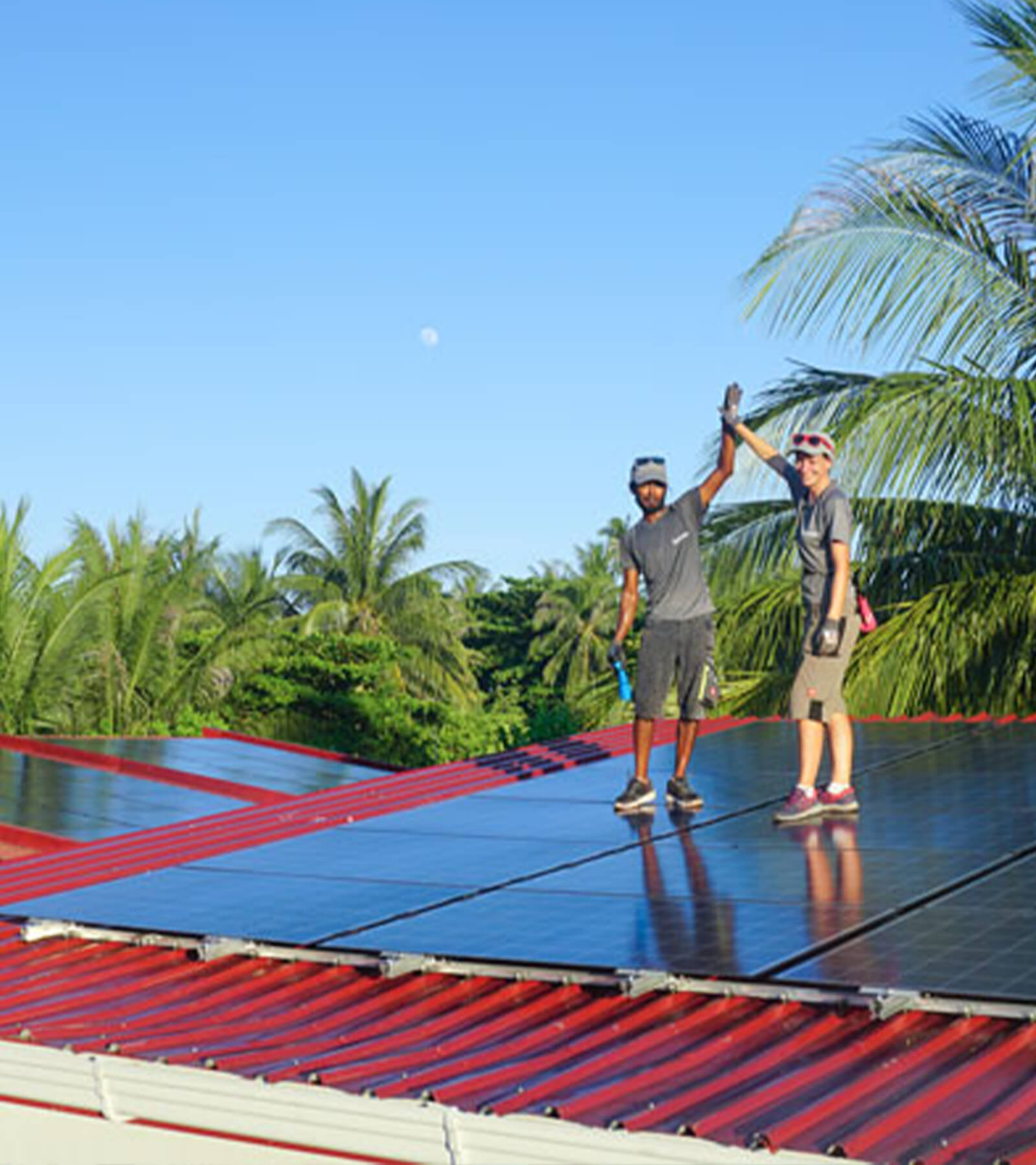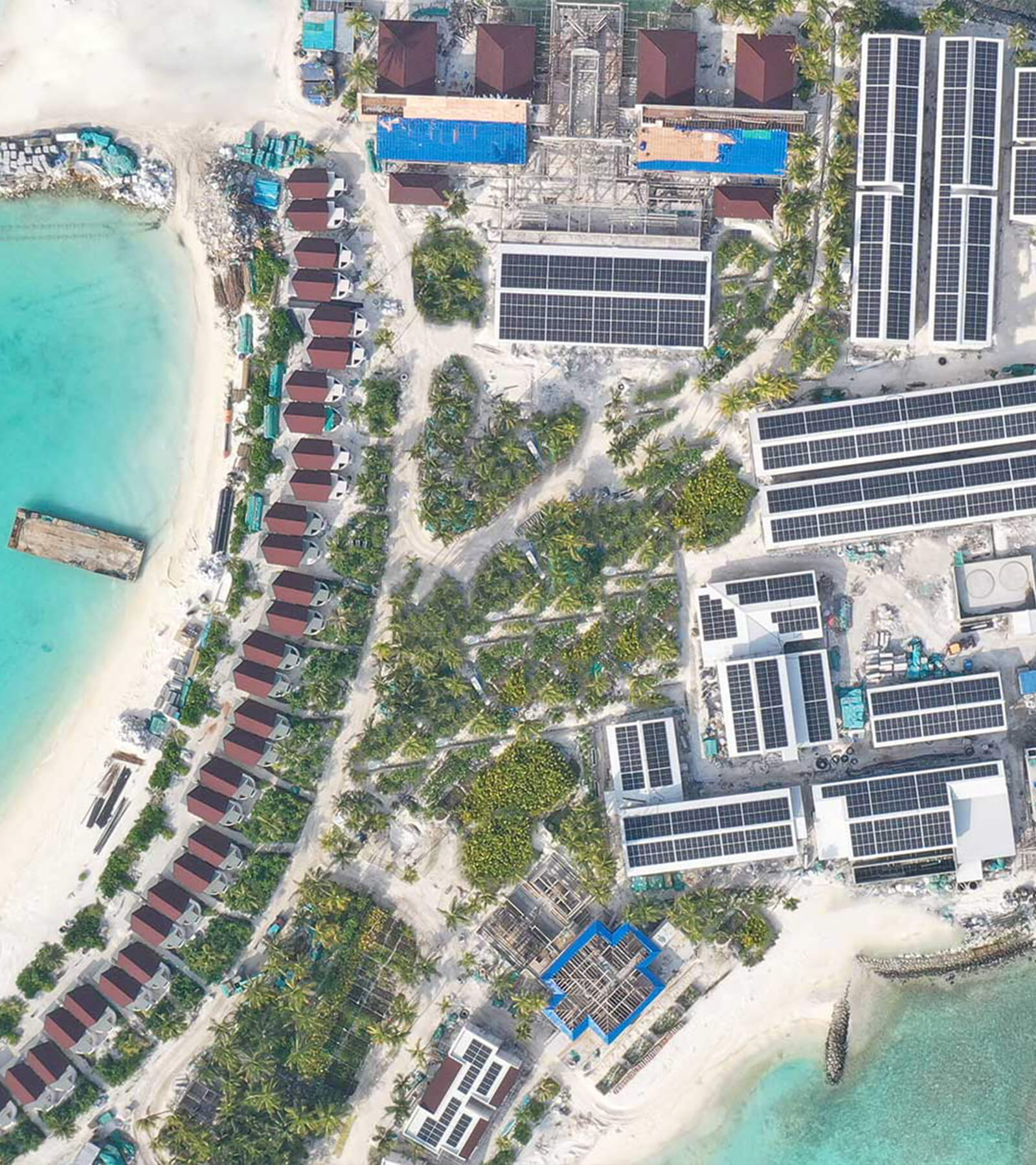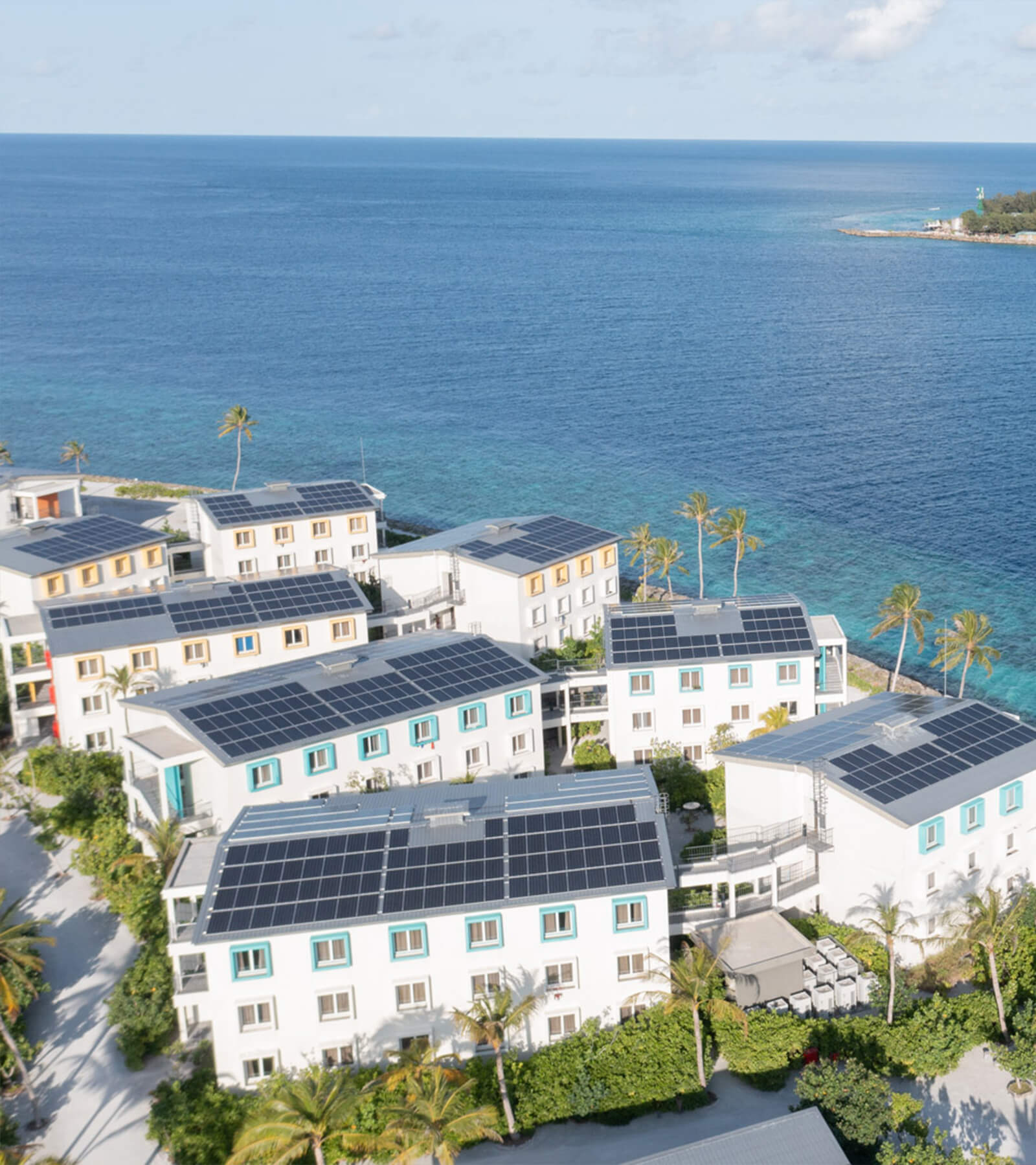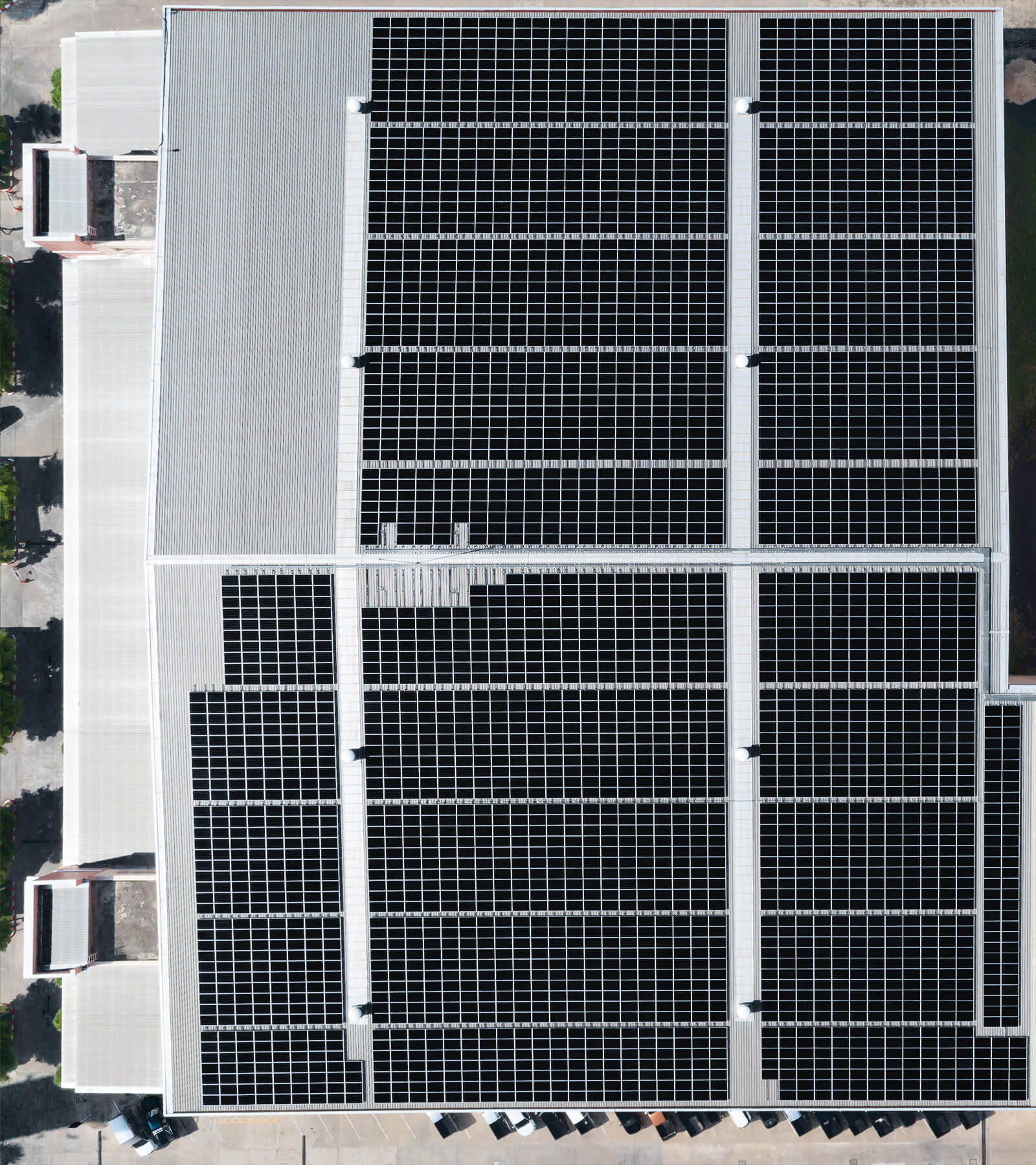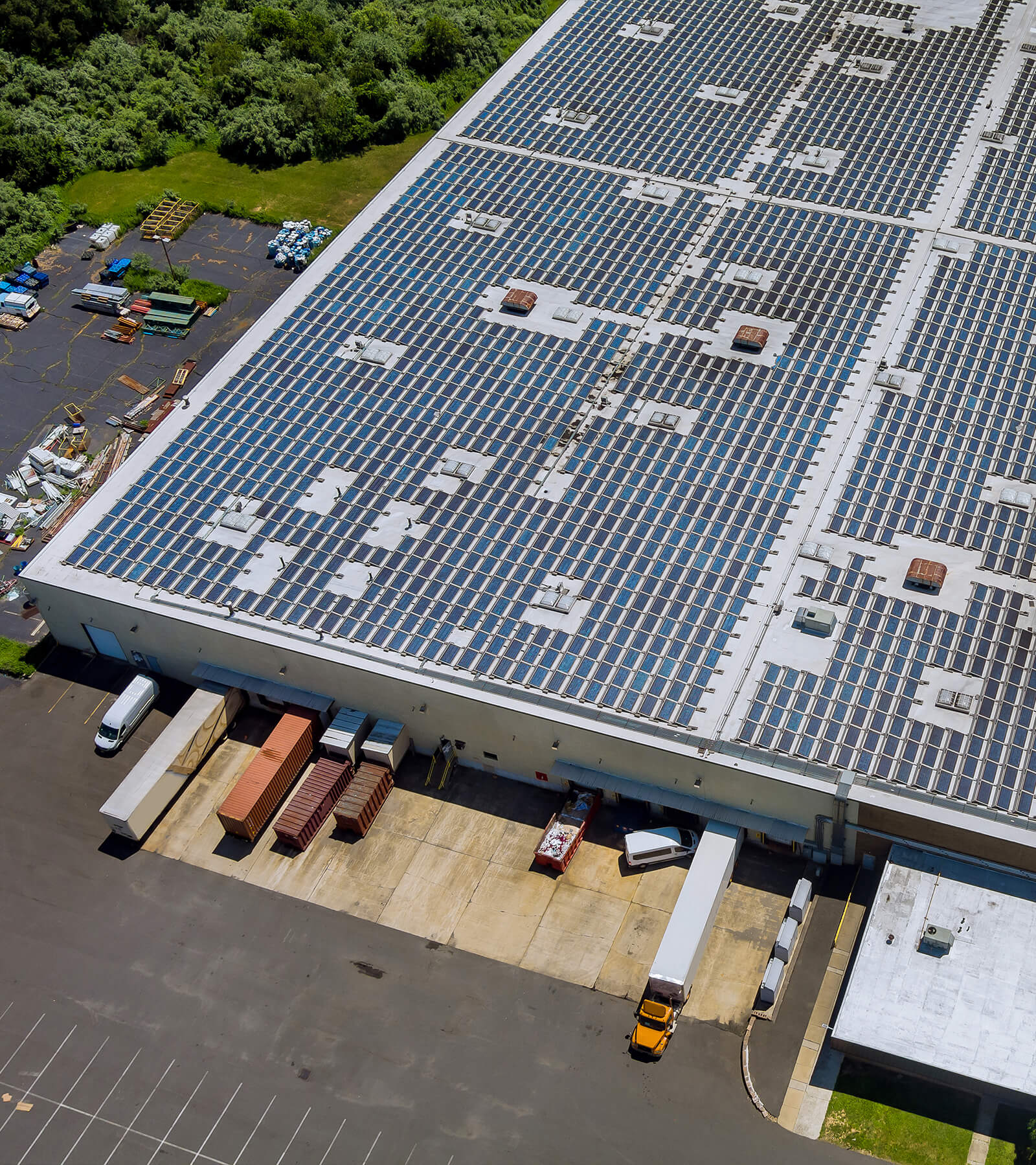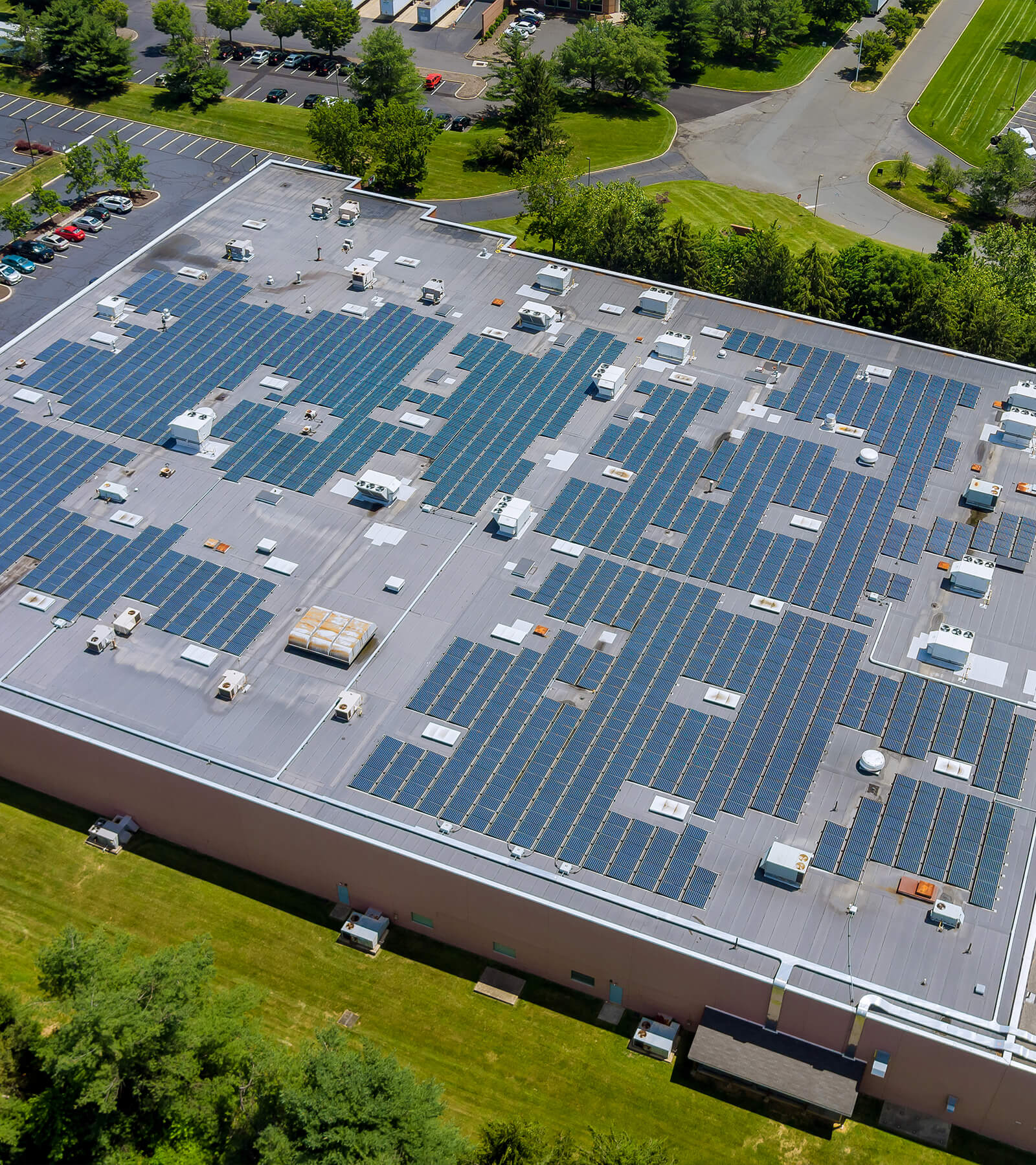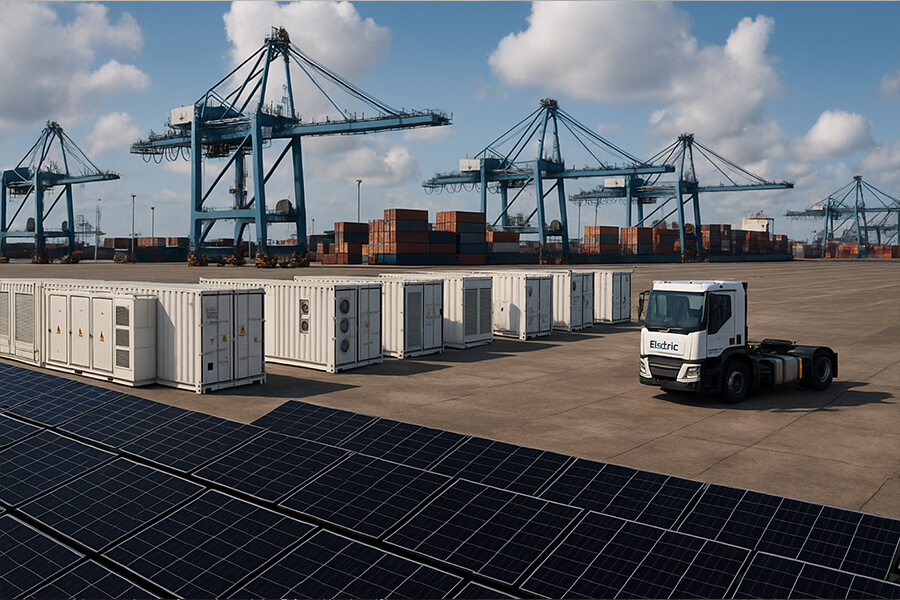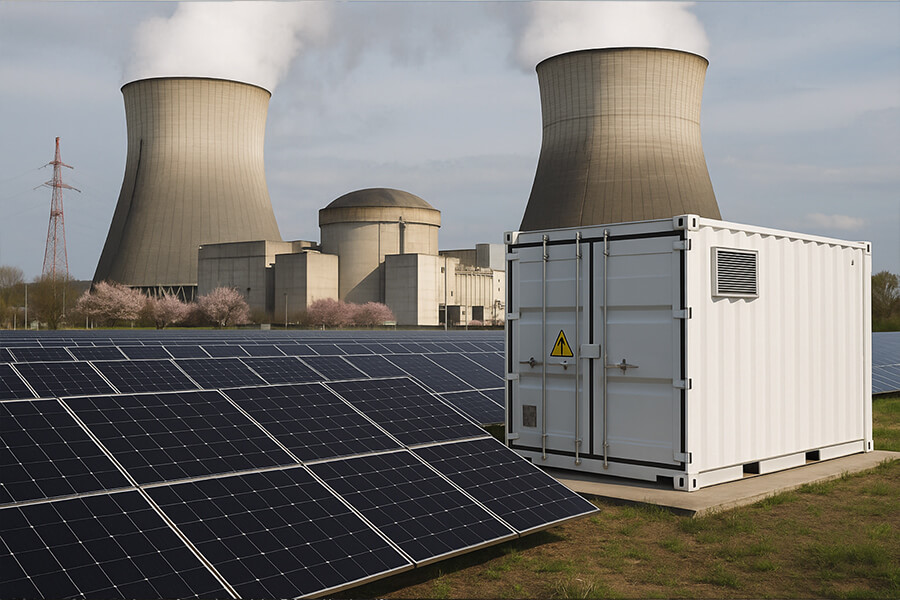At Royal FloraHolland’s Aalsmeer hub – where €6.7 billion in flowers trades annually – a 17% spoilage rate threatened to turn millions of roses into compost. Enter Agricultural BESS Container Microgrids: these 14MWh battery “islands” eliminated night-time grid dependency, locked in a life-saving 2°C, and slashed losses to save €6.2 million/year. See how containerized storage became the ultimate Spoilage Slayer.
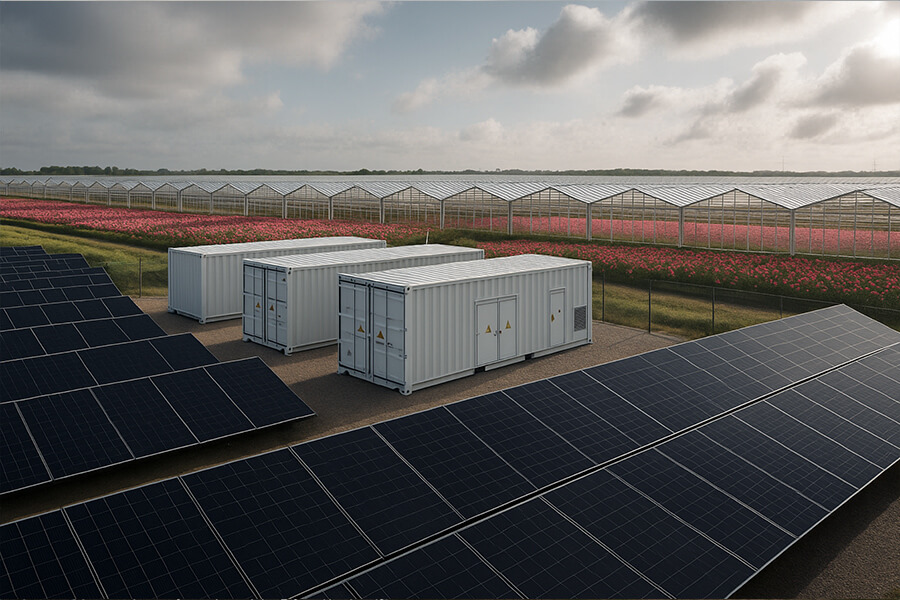
The Fragile World of Flowers: Where Millions of Blooms Meet Millimeter Margins
Picture the New York Stock Exchange. Now replace suits with scent, tickers with tulips, and trading floors with refrigerated warehouses. Welcome to Royal FloraHolland’s Aalsmeer complex – the Wall Street of Flowers. Every day, over 30 million flowers change hands in a high-stakes ballet of bids, logistics, and absolute temperature precision. One wilted petal? That’s somebody’s profit margin composting.
The Cold, Hard Problem: Nightmares After Sunset
By day, solar panels power this floral metropolis. But when the sun clocks out? Traditional grid power becomes the unreliable night shift manager. Maintaining a surgical 2°C in massive refrigerated warehouses isn’t a suggestion – it’s the lifeline for €6.7 billion worth of annual trade. Fail, and you don’t just lose blooms; you incinerate cash.
Table 1: The Chilling Economics of Flower Preservation
| Factor | Pre-BESS Reality | Source |
|---|---|---|
| Daily Volume | 30 million stems | Royal FloraHolland Annual Report 2024 |
| Value at Risk Daily | ~€18.3 million | (Based on annual trade value) |
| Critical Temp Window | 2°C (±0.5°C tolerance) | Floral Cold Chain Standards (EU Agric. 2023) |
| Pre-BESS Night Spoilage | Up to 17% loss during temp fluctuations | Wärtsilä Case Study: Agri-Energy Transition |
| Avg. Outage Cost | €280,000/hour (cooling + transaction halt) | Dutch Grid Analysis (TenneT 2024) |
Why 2°C is a €6.2 Million Tightrope Walk
A single 30-minute grid hiccup isn’t a blip – it’s a cascade failure. Flowers respire. Heat climbs. Cell structures collapse. Before 2025, overnight temperature drifts of just 3°C-4°C during grid reliance caused 17% spoilage – translating to a €6.2 million annual hemorrhage. That’s not a loss; that’s dumping 2,400 dumpsters of premium roses annually (FAO Food Loss Stats). Keeping this operation crisp isn’t logistics; it’s hostage rescue for horticulture.
The Transaction Tinderbox: 10,000 Deals on a Knife’s Edge
The real kicker? 10,000+ daily auctions hinge on uninterrupted power. Automated sorters, digital bidding screens, payment gateways – a single outage doesn’t just threaten tulips; it torches trust. Imagine your Valentine’s Day roses wilting before the courier even revs his engine – because a grid sneezed. When billions ride on real-time deals, “downtime” is synonymous with “bankruptcy.”
Table 2: Operational Vulnerability Snapshot
| System | Outage Impact | Financial Exposure |
|---|---|---|
| Refrigerated Warehouses | Temp spike → Rapid quality decay | €18.3 million/day product value at risk |
| Automated Sorting Lines | Halt → Auction delays, shipment bottlenecks | €280,000/hour (logistics penalties) |
| Digital Auction Platforms | Crash → Transaction freeze, data corruption | Reputational damage + contractual penalties |
| Total Daily Transactions | 10,000+ requiring 99.99% uptime | Foundation of €6.7B annual marketplace |
The stakes? Higher than a Dutch greenhouse. This isn’t just about keeping flowers pretty. It’s about securing a €6.7 billion ecosystem where temperature stability equals transaction integrity. Fail, and Wall Street’s tulip mania looks like a quaint footnote.
Enter the “Green Giants”: How Agricultural BESS Container Microgrids Became Floral Bodyguards
Remember that €6.2 million annual hemorrhage from temperature tantrums? Cue the cavalry: not knights in shining armor, but 40-foot Agricultural BESS Container Microgrids rolling into Aalsmeer. Deployed in early 2025 through a powerhouse partnership (Eaton’s power conversion + Wärtsilä’s energy storage), these 14MWh battery behemoths became the silent, stainless-steel guardians of petal perfection. Think less “transformer,” more “temperature tamer.”
Solar Smoothing: Turning Sunshine into Steady Chill
By day, the facility’s solar arrays work overtime. But instead of letting excess energy vanish like morning dew, these BESS containers gulp it down like sunbathing champions. At night? They release it as a slow, steady drip-feed of liquid coolness. No more solar siestas causing refrigeration panic attacks. The result? 72-hour runtime without grid or sun – enough to outlast even Dutch winter nights (Wärtsilä Case Study: Aalsmeer Deployment).
Table 1: The “Green Giant” Spec Sheet
| Feature | Specification | Impact | Source |
|---|---|---|---|
| Total Capacity | 14 MWh (scalable) | Powers entire complex 3 days off-grid | Eaton GridEdge Solution Brief |
| Modular Design | 500 kWh “Lego Blocks” | Add capacity in <48 hours | Wärtsilä Quantum High-Energy |
| Chemistry | Lithium Iron Phosphate (LFP) | 15-year lifespan, zero thermal runaway risk | Fraunhofer ISE Battery Report 2024 |
| Response Time | <20 milliseconds | Instant backup during grid “blinks” | ENTSO-E Grid Stability Standards |
| Daily Solar Harvest | 8.2 MWh absorbed (peak shaving) | Cuts grid draw by 63% during daylight | Royal FloraHolland Sustainability Dashboard |
The “Island Mode” Superpower: When the Grid Takes a Nap
What happens when the main grid decides to ghost the world’s largest flower auction? Pre-2025: chaos. Post-BESS: a shrug. These containers instantly flip to Island Mode, becoming self-sufficient micro-power plants. Auction screens stay lit, sorters keep humming, and coolers hold a rock-solid 2°C ±0.1°C – all while the wider grid snoozes through an outage. As one grower quipped: “My tulips didn’t even notice the national blackout drill. Rude.” (Dutch TSO TenneT Resilience Report).
The Spoilage Slayer’s Trophy Case
The proof? In the petals:
- Mission “Locked at 2°C”? Accomplished. Nighttime temp variance crushed from ±3°C to ±0.1°C.
- The Spoilage Slayer: Annual flower losses slashed by 17% – equivalent to saving 4.9 million roses from the compost heap.
- The Bottom Line Blooming: €6.2 million/year saved (and counting). That’s not just profit; it’s price stability for 5,000 growers.
Built Tough, Built to Grow: The Anti-Obsolescence Arsenal
These aren’t flashy gadgets with planned expiration dates. With rugged LFP chemistry shrugging off 15,000+ cycles and a 15-year warranty, they’re the floral cold chain’s answer to a Volvo. Need to scale for the Valentine’s Day/Mother’s Day tsunami? Just slot in another 500kWh block – like upgrading your warehouse by ordering takeout. The entire system scales linearly with turnover, proving Agricultural BESS Container Microgrids grow with you, not against you (BloombergNEF Battery Price Survey 2025).
Why Aalsmeer Sleeps Soundly Now:
As the auction’s head engineer noted: “Before, night shifts felt like defusing bombs. Now? Our biggest worry is whether the coffee machine has Island Mode.” With grid hiccups neutralized, solar maximized, and €6.2 million reclaimed, these steel guardians turned a floral fragility into fortress-like resilience. Next challenge? Teaching the BESS to trim rose thorns.
Why This Agri-Energy Transition Matters: From Flower Power to Global Food Security
Let’s cut the bouquet: saving €6.2 million on roses is delightful, but the real thorn in humanity’s side is bigger. Agricultural BESS Container Microgrids at Aalsmeer aren’t just protecting petals – they’re stress-testing a survival blueprint for our entire food chain. Because when climate chaos meets dinner plates, energy resilience isn’t optional. It’s existential.
The Cold Chain Crisis: Where the World Is Spoiling
Globally, 30% of food produced never reaches a mouth (FAO 2025). Why? Because refrigeration gaps and grid failures turn harvests into heartbreak:
- In India, 40% of fruits/vegetables rot before sale due to power cuts (World Bank Agri-Finance Report)
- African dairy farmers lose up to 50% of milk without stable cooling (IFAD Renewable Energy Study)
- EU meat processors bleed €500,000/hour during outages (European Food Safety Authority)
Table 1: The Global Spoilage Tax – And How BESS Pays Dividends
| Sector | Annual Loss (Pre-BESS) | BESS Mitigation Potential | Source |
|---|---|---|---|
| Global Fruit/Veg | €280 billion | 35-50% reduction with solar + BESS | FAO Food Waste Index 2025 |
| Dairy Processing | €42 billion | 22% spoilage cut via temp stability | International Dairy Federation |
| Meat/Poultry | €90 billion | 31% loss avoidance with outage-proofing | UNEP Cool Coalition |
| Medicinal Plants | €12 billion | 99% value preservation at 2°C-8°C | WHO Essential Medicines Report |
The Triple Threat Facing Every Farm
Aalsmeer’s victory over volatility reveals a universal playbook against agriculture’s trifecta of terror:
- Temperature Tantrums: Whether roses or rabies vaccines, ±0.5°C precision separates profit from putrefaction.
- Grid Gambles: Farmers face 300% more outages than urban businesses (IEA Electricity Access Report).
- Price Roulette: EU fertilizer costs swung 90% monthly in 2024 – solar + BESS slashes exposure (Eurostat Agri-Energy).
Containers to the Rescue: The “Lego Block” Energy Revolution
The genius? Agricultural BESS Container Microgrids work equally well for tulips or tomatoes because they’re:
- Rapid-Deploy: Installed in <4 weeks vs. 2+ years for grid upgrades (Wood Mackenzie Energy Transition)
- Climate-Agnostic: Operate from -30°C (Arctic fisheries) to 50°C (Saudi greenhouses) (DNV Battery Performance Standards)
- Profit-Printers: Achieve ROI in 2-3 years via energy arbitrage + spoilage cuts (BloombergNEF Agri-BESS ROI)
Table 2: The Containerized Advantage – By the Numbers
| Metric | Traditional Grid | BESS Container Microgrid | Impact |
|---|---|---|---|
| Deployment Time | 24-36 months | 3-8 weeks | 92% faster crisis response |
| Temp Stability | ±2°C-5°C fluctuations | ±0.1°C precision | Spoilage cut by 17-35% |
| Energy Cost Volatility | €0.40/kWh (peak EU grid) | €0.08/kWh (solar + BESS) | 80% lower operating costs |
| CO2 Footprint | 300g CO2/kWh (grid avg) | Near-zero with renewables | Meets EU’s “Farm to Fork” mandates |
From Dutch Greenhouses to Global Breadbaskets
The EU is turbocharging this shift with €15 billion for on-farm energy resilience (European Green Deal). Meanwhile, California’s almond growers use BESS containers to shave $28 million/year in demand charges (CA Energy Commission). As Wärtsilä’s lead engineer muses: “Same steel box that saves roses in Amsterdam prevents avocados from composting in Mexico. That’s scalability.”
The Bottom Line: Resilience Is the New Crop Yield
With 50% more mouths to feed by 2050 (UN), agriculture’s energy transition isn’t about being green – it’s about not starving. As Aalsmeer proved: Agricultural BESS Container Microgrids turn vulnerability into victory. Because when the grid flatlines, dinner shouldn’t.
Your Own Power Play? Where Resilience Meets ROI with Maxbo Solar
Witnessing Royal FloraHolland’s €6.2 million revival wasn’t just inspiring – it was a masterclass in how Agricultural BESS Container Microgrids transform vulnerability into victory. At Maxbo Solar, we don’t just applaud these energy revolutions; we engineer them. While flowers bloomed in Aalsmeer, our teams were deploying the same bulletproof resilience for dairy cooperatives in Denmark, vertical farms in Dubai, and medicinal herb processors in the Alps. Because your cold chain shouldn’t crumble when the grid flickers.
Why 1,300+ Farms Trust Maxbo Solar’s Agri-BESS Ecosystem:
We blend German engineering precision with turnkey simplicity to deliver:
- Solar + Storage Synergy: Harvest sunlight by day, dispatch liquid coolness by night – with 92% round-trip efficiency guaranteed (Fraunhofer ISE Validation).
- “Island Mode” On Demand: When storms knock out regional grids, our systems switch to self-power in <20 milliseconds – faster than a blackout trips your lights (ENTSO-E Grid Code Compliance).
- Spoilage Slashing ROI: Typical projects achieve payback in 2-3 years via energy arbitrage + loss reduction (see Table 1).
Table 1: Maxbo Solar’s Proven Impact – By Sector
| Client Type | Challenge | Maxbo Solution | Result | Source |
|---|---|---|---|---|
| Dutch Tulip Farm | 19% loss from spring frosts | 2.4MWh BESS + Solar Microgrid | €310k/year saved, 0% frost loss | Wageningen University Case |
| Spanish Olive Mill | €0.52/kWh peak energy costs | 3.6MWh BESS + Peak Shaving | 80% demand charge cut, €220k/year saved | IEA Renewable Integration |
| Norwegian Salmon Hatchery | ±3°C temp swings | 5MWh Offshore-Tough BESS | ±0.2°C stability, mortality ↓ 11% | DNV AquaEnergy Report |
The Maxbo Difference: No Guesswork, Just Grid Independence
While others sell batteries, we deliver certainty:
- Precision-Tuned Chemistry: LFP or nickel-manganese-cobalt? Our AI-driven StorageSelector™ matches chemistry to your crop’s critical temps (BloombergNEF Performance Database).
- Modular Scalability: Start with 250kWh, expand to 20MWh – add blocks like ordering extra warehouse shelving.
- 15-Year Ironclad Warranty: Backed by Munich Re’s €10B green tech assurance fund (Munich Re Sustainability).
“But What About My Unique Operation?” Let’s Crunch Your Numbers
Every enterprise has a hidden “spoilage tax”:
[Your Energy Cost] × [Outage Hours/Year] + [Product Value] × [Loss Rate] = Your Annual Vulnerability Bill
For Royal FloraHolland, that equaled €6.2 million. For a California strawberry packer we partnered with last month? €1.7 million recovered after deploying our 1.8MWh microgrid (CA Energy Commission Case Study).
Ready to Transform Your Resilience Equation?
Maxbo Solar doesn’t just install containers – we architect unbreachable energy fortresses. From “island mode” peace of mind to spoilage-slashing profits, your operation deserves power that protects.
→ Power Your Bloom: Explore Tailored Agri-BESS Solutions
www.maxbo-solar.com

